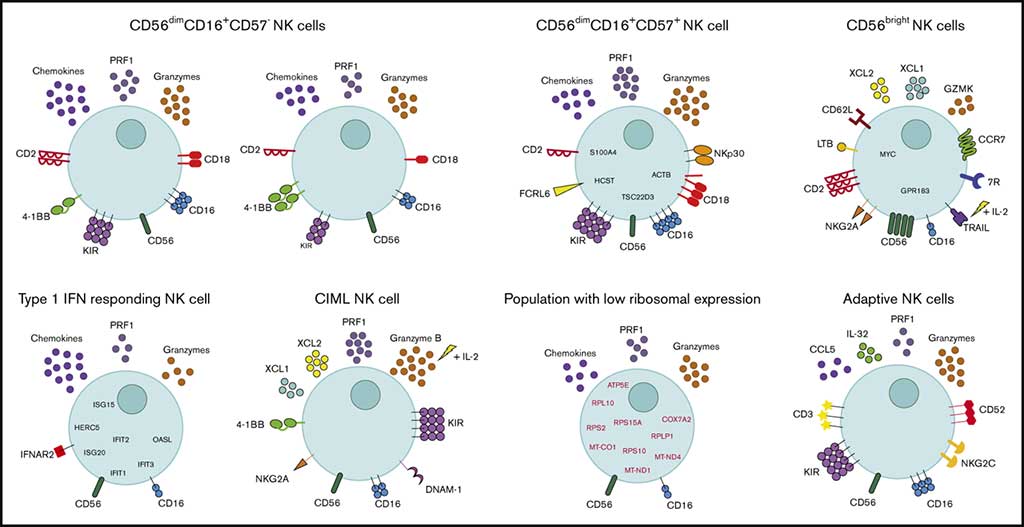Human NK Cells Identified by Single-Cell RNA Sequencing
By LabMedica International staff writers
Posted on 27 Apr 2020
Natural killer (NK) cells are cytotoxic lymphocytes that are crucial for viral defense as well as detecting and killing cancer cells. This cell type is therefore of great interest for cancer immunotherapy.Posted on 27 Apr 2020
Human natural killer (NK) cells in peripheral blood perform many functions, and classification of specific subsets has been a longstanding goal. NK cells have also been implicated in a wide range of diseases: those caused by microbial pathogens, autoimmune diseases, reproductive complications, and transplantation.

Image: Diversity of peripheral blood human NK cells identified by single-cell RNA sequencing (Photo courtesy of University of Manchester).
An international team of scientists led by those at the University of Manchester (Manchester, UK) obtained peripheral blood samples from various sources. Peripheral blood mononuclear cells were isolated from fresh blood collected into EDTA-coated tubes by density gradient centrifugation (Ficoll-Paque Plus; Amersham Pharmacia Biotech, Piscataway NJ, USA) or from leukocyte reduction system chambers through Ficoll density centrifugation. Primary human NK cells were isolated by negative magnetic bead selection (Miltenyi Biotec, Bergisch Gladbach, Germany) or (Stemcell Technologies, Vancouver, BC, Canada) into medium. The NK cells were stained with diverse labeled antibodies and assessed by flow cytometry on a BD FACS Canto II flow cytometer (BD Biosciences, San Jose, CA, USA). Individually barcoded single-cell RNA sequencing (scRNA-seq) libraries were also prepared.
The team identified three novel human blood NK cell populations: a population of type I interferon–responding NK cells that were CD56neg; a population exhibiting a cytokine-induced memory-like phenotype, including increased granzyme B mRNA in response to IL-2. They als o identified a small population, with low ribosomal expression, downregulation of oxidative phosphorylation, and high levels of immediate early response genes indicative of cellular activation. Analysis of CMV+ donors established that CMV altered the proportion of NK cells in each subset, especially an increase in adaptive NK cells, as well as gene regulation within each subset.
The authors summarized that NK cells within healthy individuals displayed an exquisite division of labor. The expansion, contraction, or alteration, of these subsets in pathological settings will give insight into NK cell responses during disease progression. The study was published on April 9, 2020 in the journal Blood Advances.














